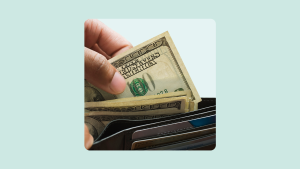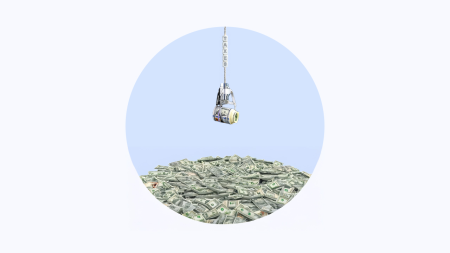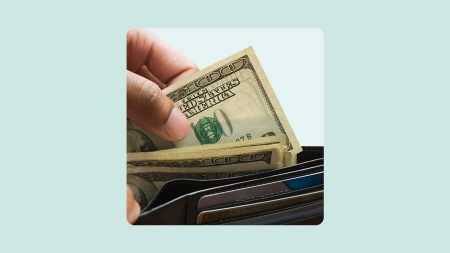Key takeaways
- A home improvement loan can provide quick funding and flexible repayment options to homeowners.
- Home improvement loans may come with higher rates and fees for borrowers with bad credit.
- These loans can help build your credit and increase the value of your home, but they also have potential drawbacks such as high fees and secured options that put your assets at risk.
Home improvement loans (also called home renovation loans) are personal loans or home equity products offered by online lenders, banks and credit unions. Although they work like any other loan, you can only use the funds for renovation costs and related expenses.
While ideal for certain projects or renovations, they’re not perfect for every situation and can come with serious risks. For one, home equity products are secured and require you to back the loan with your home. Plus, most home improvement loan lenders require a good or excellent credit score and steady income, so qualifying can be a challenge.
Pros and cons of home improvement loans
Home improvement loans are an essential tool for homeowners who lack the cash on hand to complete a project. However, if they’re not managed properly, they can cause financial and credit damage that outweighs the renovation’s value.
Pros
- Helps build credit.
- Finance a large project.
- Add value to your home.
- Fixed payments.
Cons
- Potentially high fees.
- Potentially high interest rates.
- Some loans are secured.
- Negative impact on credit.
Home improvement loan benefits
If you’re financing a project that will increase your home’s or market value, a home improvement loan may be what you need to get started. Plus, with consistent, on-time repayment, you could very well see your credit score grow as well.
Helps build credit
The largest percentage (35 percent) of your FICO credit score is made up of your payment history. Making timely payments over the length of your loan is one of the best ways to see your score grow.
Plus, a loan can expand your credit mix if you have a thin borrowing history. Having a diverse credit history is another way to increase your credit score and, in turn, make future borrowing less expensive.
Finance a large project
Some lenders offer up to $100,000 in personal loan funds. However, this isn’t a common maximum amount, and not everyone will be able to qualify for such a large loan.
If you have significant equity in your home, you may be able to borrow even more with a home equity line of credit (HELOC) or home equity loan. However, you will have to back the loan with your home, and you risk losing it if you can’t make the monthly payments.
You should only pursue such a large amount if you have the wiggle room in your budget to comfortably afford the payments, from origination to the day you pay down the entire balance.
To be certain you can afford the loan, learn your possible interest rates and fees by prequalifying if available. The larger the loan, the higher the potential risk high-interest debt poses.
Compare multiple loan offers to see if you can score a better rate and use a personal loan calculator to play around with repayment plans.
Add value to your home
To make the associated fees and costs of a home improvement loan worth it, use the funds strategically. Only use the loan on projects that will increase your property’s safety or market value.
If you plan to sell your home and use the loan for improvements based on your area’s specific housing market, you can recoup some of what you spent. Although it may vary depending on where you live, the home improvements that typically add the most value include minor kitchen renovations, basement conversions and energy-efficient improvements.
Fixed payments
Home improvement personal loans and home equity loans are fixed-rate installment loans, meaning you’ll be on the hook for a predetermined monthly payment amount.
Installment loans can be the better financing solution for smaller, short-term projects. Multi-stage renovations and larger projects may be better funded with a home equity line of credit, especially if you’re unsure of the overall cost.
Home improvement loan drawbacks
Home improvement loans aren’t the best option for every borrower. Factors like fees, high rates and hard credit pulls can add thousands to the overall cost of the loan.
Due to the potentially high cost or home equity risk, they’re best used for projects that are absolutely necessary or that are guaranteed to increase your market value.
Potentially high fees
Not every lender charges the same fees, but many have a similar fee structure. Look out specifically for origination fees — these eat into your loan proceeds significantly. Some lenders don’t charge origination fees, but they may have higher APR ranges to recoup those costs.
Origination fees range up to 12 percent of the principal amount. With most lenders, the fee is deducted from your overall loan amount. As with most fees, the higher your credit, the lower your origination fee is likely to be.
Some lenders may also charge late fees and prepayment penalties. Look for a lender that doesn’t charge either, as both will increase your overall cost and limit your payment flexibility from month-to-month.
Potentially high interest rates
Home improvement loan interest rates can be as steep as 36 percent — especially for those with poor credit. The higher your interest rate, the more expensive your loan will be. Since home improvement projects often come with a high price tag, finding a low interest rate is vital.
If a lender charges a higher rate than you can afford, and especially a rate over 36 percent, you should look elsewhere.
Some loans are secured
Most personal loans are unsecured, which means they don’t require collateral. However, some loans are secured either by your home’s equity or by another asset, like a savings or investment account.
If you’re unable to pay your loan and enter default, the lender could seize your collateral to satisfy your debt. Even if a secured loan comes with lower rates, the risk potential is much higher. Only individuals who can guarantee they’ll be able to make the payments should apply.
Possible negative impact on credit
Applying for a home improvement loan will result in a small drop in your credit. This is because the lender has to initiate a hard credit check to view your credit report.
A hard check stays on your credit report for up to two years; however, the negative impact on your score is temporary. With good repayment, your score should be back up to where it was in no time.
On the other hand, if you miss any payments or default on your loan, your lender is likely to report this to the credit bureaus. Missed payments will damage your score and can stay on your credit report for up to seven years.
Check your credit report prior to applying. It includes your entire repayment history, any existing negative marks and your current debt load.
Pay attention to your credit utilization ratio specifically. If you already carry a balance, borrowing with a HELOC or credit card can harm your score by increasing your utilization ratio.
When to get a home improvement personal loan
Taking out a personal loan for home improvements may make sense in the following scenarios.
- You need money fast to cover emergency home repairs. Unsecured home improvement loans generally have fast funding speeds, making them better for emergency or unexpected repairs.
- You’re paying for a one-time home improvement project. If you need to borrow a lump sum of money to cover a project, a personal loan may be a good idea. For ongoing projects, consider a credit card, line of credit or HELOC.
- You prefer not to risk losing collateral. A home improvement personal loan is typically unsecured, so you won’t risk losing an asset, such as your home.
When not to get a home improvement personal loan
A home improvement loan may not be the best option for individuals who fit into the following scenarios.
- You have poor credit. Most lenders require that borrowers have a good-to-excellent credit score. Some companies offer bad credit loans, but you’re more likely to get stuck with a high rate or unfavorable terms.
- ou have equity built up in your home. Although it comes with increased risk, home equity products are often cheaper than loans. Just make sure you meet the requirements and have at least between 15 and 20 percent equity in your home.
- You don’t know exactly how much you need to borrow. Unless you know the exact dollar amount you need to borrow and have a set project timeline, steer clear of a loan. Settle these details out before applying so you don’t overborrow and pay interest on money you didn’t need in the first place.
What type of home improvement loan should you get?
There are multiple types of home improvement loans beyond just personal loans.
-
Current average interest rate: 12.38%
Unsecured personal loan interest rates are typically higher than secured loan rates, but they offer some perks in exchange. Funding times are faster, since the lender doesn’t have to assess your home’s value — which also means no closing costs.
Because personal loans have fixed interest rates, your payment will be the same each month. On the downside, the rates you receive and whether you qualify at all depend heavily on your credit score, rather than your home’s value.
Few lenders offer repayment terms over seven years, which could make payments hard to manage. This is specifically true for those financing a large project or individuals who get stuck with a high rate. Plus, you can’t deduct interest on your taxes for related purchases with a loan like you can with a home equity product.
-
Current average interest rate: 8.73%
Like a personal loan, a home equity loan disburses the funds in one lump sum that you repay in fixed monthly payments. However, home equity loans may be easier to qualify for, as you put up your home as collateral. This also drives rates down when compared to loans that base interest solely on credit.
Keep in mind that you risk losing your home if you default on the balance. Plus, closing costs are usually high.
-
Current average interest rate: 9.18%
A HELOC is a secured, revolving line of credit, meaning you draw money as needed. Interest rates are often low but typically variable, fluctuating with the market. As with home equity loans, the biggest downsides are that you could lose your home if you can’t pay what you owe and that closing costs can be expensive.
-
Current average interest rate: About 7%.
Refinancing replaces your current mortgage with a new mortgage and interest rate. With a cash-out refinance, you take out a new mortgage for more than you owe on your house and use the difference to fund your home improvement project. But closing costs can be steep, and it may not make sense if interest rates are higher than what you’re paying on your current mortgage loan.
-
Current average interest rate: Fixed; market rate.
This government loan is guaranteed by the Federal Housing Administration (FHA) and designed specifically for home improvements, renovations and repairs. The maximum amount is $25,000 for a single-family home, which is lower than most other options. You also may need to provide collateral, depending on your loan amount.
Regardless, this is one of the best options for homeowners with low-to-middle incomes.
-
Current average interest rate: 20.73%.
On the surface, getting a new credit card may not seem like a good idea for funding home improvements because of their high interest rates. But if you have good credit, you may qualify for a card that offers a 0 percent APR introductory period. These periods typically last between 12 and 18 months.
Using a 0 percent card is only a good strategy for short- and medium-term projects where you have a good estimate of your expenses. You’ll want to make sure you can pay down your expenses by the end of the promotional period to avoid high interest rates.
The bottom line
Carefully consider the potential impact that taking on more debt will have on your financial health. Even before comparing lenders and looking into the details, conduct a financial audit to ensure you can handle more debt.
If a home improvement personal loan is not the right route for your financial needs, consider alternatives like a home equity loan, HELOC or credit card. But the safest option is simply saving up.
Read the full article here












